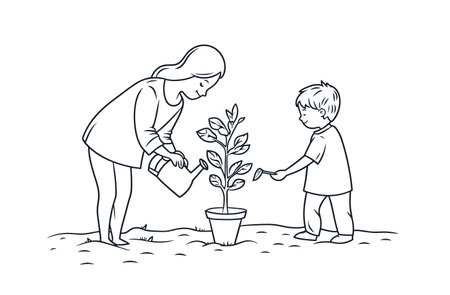Introduction to Manual Handling in the UK Workplace
When it comes to manual handling in British workplaces, it’s more than just a matter of shifting boxes from A to B. Here in the UK, we take health and safety seriously—our approach is shaped by both a strong legal framework and a culture that values the well-being of workers. The Manual Handling Operations Regulations 1992 (MHOR) set out specific obligations for employers, requiring them to assess risks and reduce injuries associated with heavy equipment as much as reasonably practicable. Despite these safeguards, injuries linked to manual handling are still all too common, especially in industries like construction, warehousing, and manufacturing. It’s not unusual for someone to recount a tale about “putting their back out” at work—a reminder of how prevalent these incidents are. British workplaces have developed a keen awareness around manual handling, but there’s always room for improvement, particularly as equipment grows larger and tasks become more demanding. Understanding the basics of manual handling within this context is essential—not just for compliance, but for cultivating a genuinely safer working environment where looking out for each other is second nature.
Common Risks Associated with Heavy Equipment
When it comes to manual handling and heavy equipment, British workers face a unique set of hazards that can lead to serious injuries if not managed properly. According to the Health and Safety Executive (HSE), musculoskeletal disorders remain one of the most reported work-related health problems in the UK, often linked to improper manual handling. Let’s take a closer look at the typical dangers encountered on-site.
Main Hazards in Manual Handling of Heavy Machinery
- Back Injuries: Lifting or moving equipment without proper posture can result in long-term back pain or even slipped discs.
- Crush Injuries: Working in confined spaces or around moving parts can lead to hands, feet, or limbs being caught between machinery components.
- Slips, Trips, and Falls: Spilled oil, uneven ground, or poor lighting contribute to falls, especially when carrying heavy loads.
- Repetitive Strain Injuries: Repeated lifting or awkward manoeuvres increase the risk of strain injuries over time.
Real-Life Examples from British Worksites
Consider a warehouse worker in Manchester who suffered a fractured wrist after attempting to move a pallet jack alone—a task meant for two. Or a construction apprentice in Birmingham who strained his lower back by twisting while lifting bricks off a lorry. These incidents are far from rare; HSE statistics from 2022 reveal that over 18% of non-fatal workplace injuries in Great Britain were due to handling, lifting, or carrying tasks.
UK Workplace Injury Statistics (2022)
| Type of Injury | % of Total Cases |
|---|---|
| Lifting/Handling | 18% |
| Slips/Trips/Falls | 30% |
| Struck by Moving Object | 11% |
The figures above underscore the importance of adopting safe manual handling techniques. In many cases, these injuries could have been avoided through better training and adherence to safety protocols—something every seasoned British worker will tell you is worth its weight in gold.

3. Principles of Safe Manual Handling
Step-by-Step Guide to Core Techniques
When it comes to handling heavy equipment, following the right manual handling principles is absolutely essential for preventing injuries. The British approach to safety puts a strong emphasis on doing things properly every single time, even if you’re just moving something a short distance. Here’s a step-by-step guide rooted in time-tested British best practices:
Step 1: Assess the Load and Environment
Before you touch anything, take a moment to size up the item you need to move. Is it awkward, heavy, or slippery? Make sure the path is clear of obstructions and hazards – trip hazards are a common culprit in British workplaces and should never be underestimated.
Step 2: Position Your Feet Correctly
Good balance is the foundation of safe manual handling. Place your feet shoulder-width apart, with one foot slightly ahead of the other for stability. This stance will help you keep your footing secure on even the most unpredictable surfaces, whether it’s a workshop floor or an outdoor site after a bit of British drizzle.
Step 3: Adopt the Right Posture
Bend at your knees, not your back. Keep your back straight and lean forward slightly from the hips. Tuck your chin in a little – imagine you’re balancing a tray of tea as you lower yourself. This classic advice isn’t just for show; it protects your spine from unnecessary strain.
Step 4: Get a Firm Grip
Use both hands to get a firm hold on the load, keeping it as close to your body as possible. If you need gloves for extra grip (or warmth on those chilly mornings), make sure they fit well and don’t reduce your dexterity.
Step 5: Lift Smoothly and Avoid Twisting
Push up through your legs in one smooth motion – no jerking or sudden movements. Keep your shoulders level and face straight ahead. Avoid twisting at the waist; if you need to change direction, turn with your feet instead of swivelling your upper body.
Top Tip from British Health & Safety Experts
If something feels too heavy or awkward, don’t soldier on alone. Use mechanical aids like trolleys or ask a mate for help. In UK workplaces, teamwork is encouraged over bravado – better safe than sorry, as we say.
By consistently applying these core techniques every time you handle heavy equipment, you’ll build habits that protect both yourself and those around you, reflecting the high standards expected across Britain’s industries.
4. Practical Techniques for Injury Prevention
When it comes to manual handling in British workplaces, a bit of know-how goes a long way towards keeping yourself injury-free. Many of us have seen colleagues throw their backs out or end up with sprains simply because they didn’t use the right technique. Here are some practical tips—gathered from years on the job and plenty of tea breaks with seasoned mates—to help you lift, carry, and move heavy items safely.
Assess Before You Act
Before you even touch that box or piece of equipment, take a moment to assess its weight and size. Is it awkward to grip? Can you see over it when carrying? If it looks like more than you can handle alone, ask for help or use the appropriate lifting aids. Don’t let pride get in the way—your back will thank you later.
Lifting Techniques: Back to Basics
| Do | Dont |
|---|---|
| Bend your knees and keep your back straight | Bend at the waist or twist your spine |
| Keep the load close to your body | Stretch out your arms to hold the load |
| Lift smoothly without jerking | Use sudden, sharp movements |
| Plan your route before moving | Rush without checking for obstacles |
Carrying Loads Safely
- If an item’s too heavy, split the load into smaller parts if possible—two trips are better than one trip to A&E.
- Wear suitable footwear with good grip; slippery floors are a hazard, especially on rainy UK days.
- Avoid holding anything above shoulder height—use step ladders or ask a mate for assistance.
Real Workplace Scenarios
Picture this: In a bustling warehouse in Birmingham, Dave always checks pallets for loose wrapping before he shifts them with a pallet truck—a quick glance saves time and reduces risk. Meanwhile, Sarah in Manchester’s construction site insists on using team lifts for awkward beams, proving that teamwork really does make the dream work. These everyday choices make all the difference.
Top Tip from Old Hands
The best advice passed down through generations is simple—never rush. Take your time to do things right. Remember, a few extra seconds spent preparing can prevent weeks off work nursing an injury.
5. Use of Aid Equipment and Teamwork
One of the most effective ways to prevent injuries while handling heavy equipment is by making full use of manual handling aids, which are widely available in UK workplaces. Commonly used tools such as trolleys, pallet trucks, hoists, and lifting straps can significantly reduce the risk of strain or accidents when operated correctly. It’s essential to ensure that all equipment is regularly maintained and suitable for the task at hand.
Choosing the Right Aid
Before beginning any manual handling task, take a moment to assess what aid equipment is available and whether it matches your needs. In Britain, there’s often a strong emphasis on “working smarter, not harder”, so don’t hesitate to use a trolley or sack truck even for short distances. Double-check the weight limits and stability of these aids before loading them.
Safe Operation Tips
Always follow manufacturer guidelines and workplace training when using lifting aids. For example, when using a hoist, ensure it is positioned securely and that loads are attached properly. Don’t rush—take the time to set up equipment safely. If you’re unsure about how to operate something, ask a colleague or supervisor; British work culture values asking for help over risking injury.
The Role of Teamwork
Manual handling in the UK is rarely a solo affair—teamwork is highly encouraged. Whether it’s coordinating lifts with a partner or communicating clearly in a team move, working together minimises risks. Use agreed signals or simple verbal cues like “ready” or “steady” before moving heavy objects. Don’t be afraid to speak up if you need an extra pair of hands; most British workplaces foster an environment where looking out for one another is part of the job.
Summary Advice
Ultimately, combining proper use of handling aids with effective teamwork not only prevents injuries but also builds camaraderie among colleagues—a value held dear across UK industries. Remember: it’s better to share the load than to carry unnecessary risk alone.
6. Employer and Employee Responsibilities
When it comes to manual handling and the operation of heavy equipment, both employers and employees have clear responsibilities under UK law and workplace culture. The foundation for these duties is set by legislation such as the Manual Handling Operations Regulations 1992 (MHOR), which outlines what must be done to protect workers from harm.
Legal Duties of Employers
Employers are legally obliged to ensure that risks associated with manual handling are properly assessed and managed. This means providing adequate training, suitable equipment, and safe systems of work. Regular risk assessments should be carried out to identify potential hazards, and adjustments must be made to minimise any dangers found. Employers are also required to consult with employees or their representatives on health and safety matters, fostering a collaborative approach to workplace safety.
Support Systems for Employees
A responsible employer will have robust support systems in place—this may include ongoing training programmes, refresher courses, access to occupational health services, and clear reporting mechanisms for concerns or incidents. Many workplaces now appoint manual handling champions or safety representatives who can provide guidance and monitor compliance on the ground. This not only satisfies legal requirements but also demonstrates a genuine commitment to staff wellbeing.
Rights and Duties of Employees
Employees, for their part, are expected to co-operate fully with all health and safety measures put in place. They have a right to a safe working environment but also a duty to follow safe systems of work, attend training sessions, use equipment correctly, and report any hazards or near misses promptly. It’s about looking out for oneself and one’s mates—a value deeply ingrained in British workplace culture.
The Moral Imperative
Beyond legalities, there’s a moral responsibility shared by everyone at work: ensuring that colleagues return home safely each day. Open communication, mutual respect, and proactive engagement with safety procedures create a positive culture where injuries are far less likely to occur.
Conclusion
In summary, managing manual handling risks while using heavy equipment is not just a box-ticking exercise—it’s a shared commitment between employer and employee, enshrined in UK law and reinforced by a longstanding tradition of workplace solidarity. By understanding your rights and fulfilling your responsibilities, you contribute to safer, healthier working environments for all.
7. Building a Safety-First Culture in the UK
Establishing a safety-first culture when it comes to manual handling and heavy equipment is not just about following rules – it’s about cultivating an attitude that values wellbeing above all else. Across Britain, there is a proud tradition of taking care of one another in the workplace, whether you’re on a construction site in Manchester or working in a warehouse in Kent. The key is to foster a proactive approach, where everyone feels responsible for both their own safety and that of their colleagues.
Ongoing training plays a vital role here. Even the most experienced workers benefit from regular refreshers, as techniques and regulations evolve over time. It’s important to remember that manual handling isn’t just for newcomers – long-standing team members can set the standard by staying up-to-date, sharing knowledge, and demonstrating best practice. This passing down of wisdom from one generation to the next has always been at the heart of British workplaces.
Open communication is equally essential. No one should feel hesitant to speak up if they spot a risk or have an idea for improving safety procedures. By encouraging staff at every level to voice concerns and suggestions – from apprentices to seasoned supervisors – companies create an environment where problems are solved before they become accidents. This inclusive approach ensures that everyone, regardless of background or experience, contributes to safer manual handling practices.
In closing, building a safety-first culture requires more than ticking boxes on a checklist; it calls for genuine commitment and daily effort from all involved. By investing in continuous learning, promoting cross-generational dialogue, and making health and safety part of everyday conversation, UK organisations can protect their most valuable asset: their people. After all, when we look after each other, we all go home safe at the end of the day – and that’s something worth striving for.


